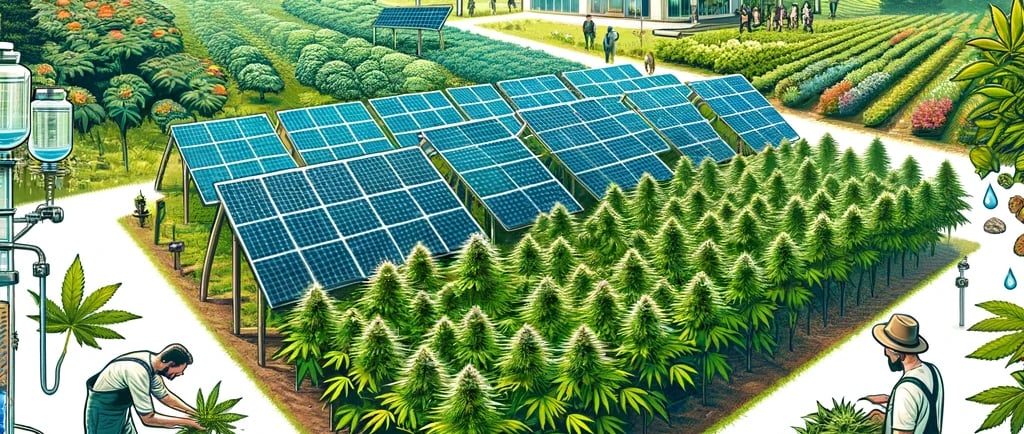Cannabis and Sustainable Agriculture: Green Farming for the Future
The cultivation of cannabis is at a pivotal juncture, with sustainability becoming as crucial as yield and quality. As the global demand for cannabis increases, both for medical and recreational use, the industry faces the challenge of adopting sustainable agriculture practices. This article explores the integration of cannabis cultivation with sustainable farming techniques, highlighting the environmental benefits, challenges, and the future outlook of green cannabis farming.
CANNABIS GUIDE
4/4/20242 min read


The Need for Sustainable Cannabis Cultivation
The traditional cultivation of cannabis, especially in indoor settings, is resource-intensive, requiring significant amounts of water, energy, and chemical inputs. As awareness of environmental issues grows, the cannabis industry is under scrutiny for its ecological footprint. Sustainable agriculture practices offer a pathway to reduce this impact, promoting a healthier environment and a sustainable future for cannabis cultivation.
Water Conservation Techniques
Water scarcity is a pressing global issue, and cannabis cultivation is notably water-intensive. Sustainable cannabis farms are adopting innovative irrigation methods, such as drip irrigation and recirculating aquaponics systems, to minimize water usage. These systems deliver water directly to the plant roots, reducing waste and ensuring plants receive the precise amount needed for optimal growth.
Energy Efficiency in Cannabis Cultivation
Indoor cannabis cultivation relies heavily on artificial lighting, which consumes a vast amount of energy. Transitioning to LED lighting, which uses a fraction of the energy of traditional grow lights, is a key step towards sustainability. Furthermore, integrating renewable energy sources, like solar and wind power, into cannabis cultivation operations can significantly reduce the carbon footprint.
Organic and Regenerative Farming Practices
The move towards organic cannabis cultivation eliminates the use of synthetic pesticides and fertilizers, favoring natural alternatives that promote soil health and biodiversity. Regenerative cannabis farming goes a step further, employing techniques that restore soil organic matter and encourage ecosystem resilience. These practices not only produce cleaner cannabis but also enhance the environmental health of the farm.
The Role of Hemp in Sustainable Agriculture
Hemp, a variety of the Cannabis sativa plant, exemplifies sustainable agriculture. Known for its rapid growth and minimal resource needs, hemp can be used for a myriad of products, from textiles and biofuels to biodegradable plastics. Its cultivation can improve soil health, sequester carbon, and provide an eco-friendly alternative to more resource-intensive crops.
Challenges to Adoption
Despite the clear benefits, the adoption of sustainable practices in cannabis cultivation faces hurdles, including higher initial costs, regulatory barriers, and a lack of awareness among consumers and producers. Education and policy reform are crucial to overcome these challenges and promote the widespread adoption of green farming practices in the cannabis industry.
The Future of Sustainable Cannabis Cultivation
The future of cannabis cultivation lies in the widespread adoption of sustainable agriculture practices. Innovations in technology, cultivation methods, and policy will likely pave the way for an industry that prioritizes environmental health alongside profitability. As consumers become more environmentally conscious, the demand for sustainably produced cannabis is expected to rise, further incentivizing the shift towards green farming.
Conclusion
Sustainable cannabis cultivation represents a critical evolution of the industry, aligning with broader environmental and social values. By adopting sustainable agriculture practices, the cannabis industry can mitigate its environmental impact, contribute to the health of the planet, and ensure a sustainable future for cannabis cultivation. The journey towards sustainability is complex, but with continued innovation and commitment, cannabis can lead the way in green farming practices.
